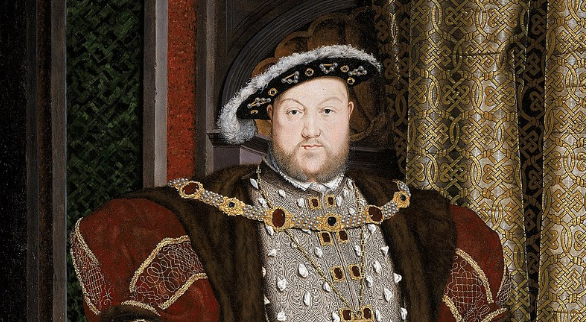
‘Divorced, beheaded, died; divorced, beheaded, survived.’ That sad little rhyme, summing up the fates of Henry VIII’s six wives, is familiar to many. But while just about everyone knows that the monarch with a thing for wedding cake said ‘I do’ six times only to turn sour, and then some, on the majority of the women he married, the details of his consorts’ reigns are perhaps less well debated. And it all starts with their coronations. For while Henry was happy to make merry with the marriage vows, he was less keen on crowning his queens. You might think that six wives means six coronations. Think again.
Only two of Henry’s wives were actually crowned Queen of England. On June 24th 1509, Catherine of Aragon was crowned alongside her new husband at the start of his reign. Henry had become King on April 22nd that year and had married Catherine, his brother’s widow, on June 11th, just in time for his coronation. The two spent the night before at the Tower of London, as was customary, before parading through the gilded streets of the capital for a magnificent ceremony. Celebrations afterwards included banquets and jousting. Traditional and splendid, it marked the beginning of a reign of an energetic new king.
No one could have had any idea just how energetic he would prove to be. Twenty four years later, on another June day, Henry watched as the queen for whom he had changed England was crowned. Anne Boleyn’s coronation took place on June 1st 1533 with the new consort entering Westminster Abbey dressed in purple and decked with ermine. She was crowned with St. Edward’s Crown which, until then, had only been worn by the monarch.
Less than two weeks earlier, on May 23rd 1533, Henry’s marriage to Catherine had been declared null and void. By then, he had already undergone two wedding ceremonies with Anne Boleyn and their union was declared valid on May 28th 1533, just in time for her coronation. Anne was already clearly pregnant and her magnificent coronation celebrations, which lasted four days, underlined the King’s power as well as the status of his new queen.
Anne’s sad fate, less than three years later, was a far cry from the glory of her coronation. Within days of her execution, on May 19th 1536, Henry had remarried but, unlike her predecessors, Jane Seymour wasn’t whisked to Westminster for a speedy coronation. Jane would get her crown when Henry got his son. However, Jane became seriously ill with puerperal fever days after delivering a baby boy and died on October 24th 1537 before any coronation could take place.
Her successor as consort never stood a chance of being crowned. Anne of Cleves arrived in England in the early days of 1540 for an arranged marriage with Henry VIII but he had decided against the idea soon after meeting her. The deal was already done but the king wasted no time in arranging the annulment of his fourth union and Anne had been replaced as consort by the summer.
Catherine Howard, who became queen on July 28th 1540, captivated the king’s heart from the earliest days of their relationship and Henry was known to be besotted with his young bride. However, that wasn’t enough for a coronation to take place. Expectations of a royal baby were high, given the amount of time the couple spent together, but Catherine was soon undone by her rivals at court as she became careless with her flirtations. She was executed, probably still a teenager, at the Tower of London on February 13th 1542, never having been crowned.
Catherine Parr most likely had no expectation of a coronation by the time she became queen number six in July 1543. By then, her husband had set a pattern of not crowning his consorts and the chances of her conceiving a child were apparently so low that hardly anyone at court bothered to speculate on the matter for by then Henry was ageing and ill and Catherine was in her thirties which was almost ancient by the standards of the time. Besides, within a few years of their union, other whispers pointed to the king possibly moving on to a seventh wife which would have made a coronation a costly waste of time. Catherine Parr, however, held on and became perhaps the most famous survivor in royal history.
Until the reign of Henry VIII, the coronation of a queen consort had been the norm but within a few years, he had managed to change the very nature of queenship with his all consuming manipulations. Besides, receiving a crown had been no protection to the wives he had had crowned with both discarded as soon as he needed to move on. The six wives of Henry VIII are a fascinating group of women in their own right and, in reality, they need no crowns to make their stories stand out.

